As we navigate the era of rapid technological advancement, digital transformation is becoming more than just a buzzword; it's becoming a necessity. Yet, while many organizations are racing towards digitization, only half of them are reaping the full benefits of their efforts. Why? The answer lies not in the sophistication of technology but in the digital employee experience. This blog will shine a light on the indispensable role of employee engagement, user-centric technology, and personalized employee experience in driving successful digital transformation.
In this blog, you will find:
👭 Why Employee Experience Is Important for Digital Transformation
🤝 Enabling Connection, Communication, and Collaboration Through User-Centric Technology
🏢 How 'Workplace' Integrates Your People and Culture into Your Digital Transformation Strategy
⚙️ Challenges and Solutions: Navigating Employee Experience in Digital Transformation
📈 Digital Transformation for Enhanced Employee Experience: The Case of Delek US
Why employee experience is important for digital transformation
For a truly successful digital transformation, enterprises need to put their people first! At LineZero, we hear questions from our customers like:
- How can my organization foster an employee-first work culture and drive employee experience?
- How can my organization help our people become more emotionally connected and engaged with our company?
Employee experience directly impacts how employees feel and engage at work. That is, how employees engage with their managers, colleagues and their daily work influences their sense of purpose and value to the organization. So, the first step with your digital transformation is evaluating how everything fits together – your business, people, processes, and technology – to ensure seamless integration with one another.
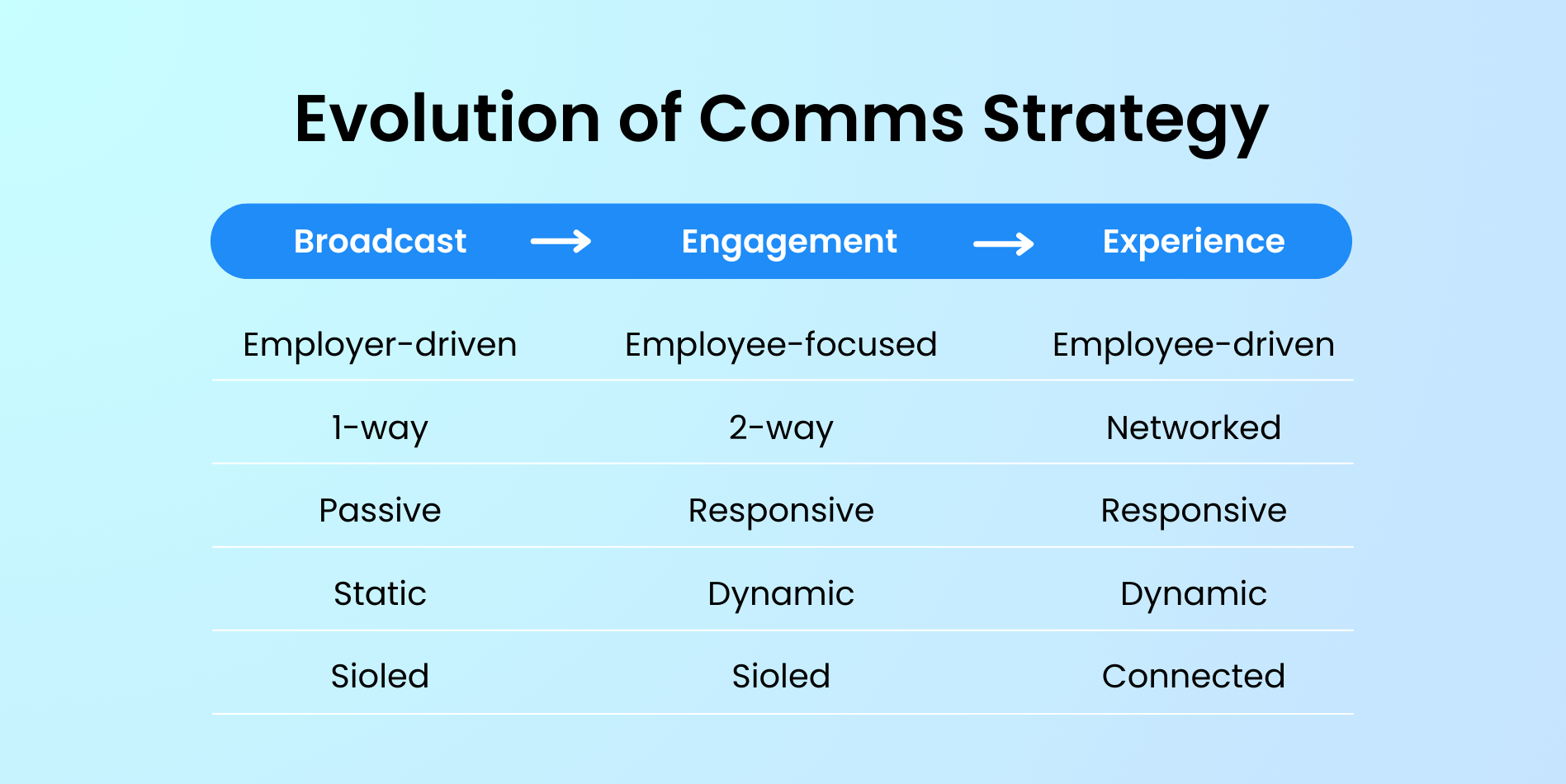
To win the talent war and deliver exceptional business performance, it’s no surprise that enterprises are looking for ways to create modern, digital workplaces with employee experience at the core. Here are 3 ways that successful digital transformation leads to a better employee experience:
- Employees want to feel valued and empowered with the right tools and technology to get the job done.
- Employees want to feel autonomous to reach their full potential through their own work.
- Employees seek flexibility in their work-life balance, so they need a tool that supports that.
Enabling Connection, Communication, and Collaboration Through User-Centric Technology
Setting clear goals for your digital transformation journey will help you get clear on the destination. But where is your organization today? Undertaking an internal audit of your current tools will help you understand and prioritize the key challenges that lie ahead and thus, will help you select the right internal communications tool for your organization. Start with these 4 questions:
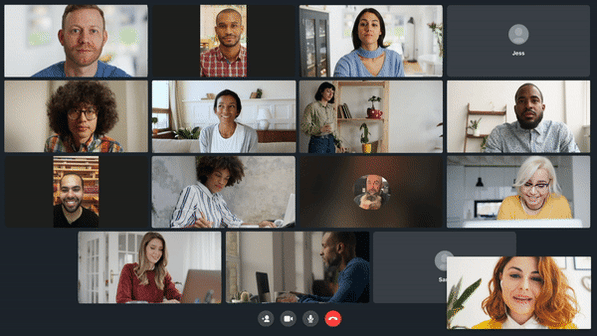
1. Who is connected? From Office Workers to the Mobile Workforce
Unless you can reach everybody in your company, including frontline and remote workers, employee experience is doomed to fail. Connecting everybody (not just everybody with an email address) is important to consider. Look for a tool with an email-less solution before embarking on your digital transformation journey.
2. Who has a voice? Promoting Employee Empowerment
Employee experience is employee-driven, which means people need to have a voice - to give feedback, ask questions, and share their experiences. Traditional channels like email or meetings don’t provide that voice, at least not effectively. Whereas tools like polls, surveys or analytics can. Look for a communications tool where two-way communication is built into the platform.
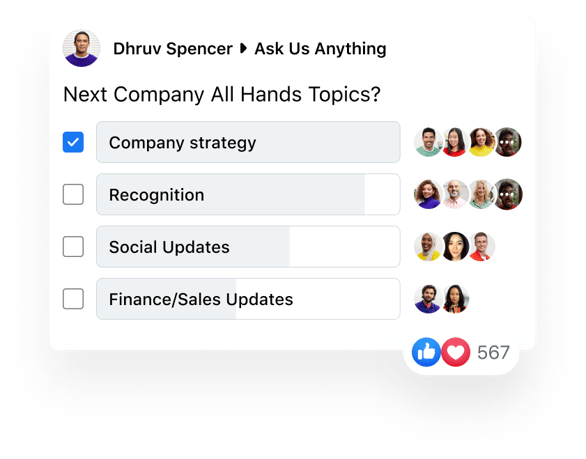 Image: Workplace from Meta's Poll Feature
Image: Workplace from Meta's Poll Feature
3. Are your current tools (really) working?
Companies can say they have a modern communication platform, but it doesn’t matter if no one is actually using it to work together. Find out what your current adoption rates are so you can get a true picture of what’s working and what isn’t to fill the gaps with the right technology.
4. What other tools are employees using? Adapting to User-friendly Interfaces and Systems
People crave communication – they want to have a voice, connect with colleagues and work together. If they’re not doing it through official channels, they’re almost certainly using shadow IT to get it done. The tools they’re using can provide valuable insights about the kind of technology they expect to have access to. Choose a communications tool that is intuitive and familiar. With Workplace from Meta, the interface is recognizable and easy to use, so there’s little to no training required to get people on and using the platform.
Challenges and Solutions: Navigating Employee Experience in Digital Transformation
The journey towards digital transformation is not always straightforward, particularly when it comes to ensuring a positive employee experience. Let's take a look at some challenges and solutions:

Challenges:
-
Integrating User-friendly Interfaces: Rapid technological advancements can be overwhelming for employees, leading to resistance, decreased productivity, and a diminished digital employee experience.
-
Achieving Work-Life Balance: In a digital environment, boundaries between work and home often blur, causing employees to grapple with achieving a healthy balance. This can lead to burnout, negatively impacting employee engagement and satisfaction.
Solutions:
-
Prioritize Personalized Employee Experiences: Tailor digital transformation initiatives to meet the specific needs and preferences of different employee groups within the organization. This caters to the diversity of your workforce, increasing engagement and satisfaction.
-
Provide Training and Continuous Learning Opportunities: Equip your employees to navigate new technologies more comfortably and efficiently. By providing ample learning and development opportunities, you minimize resistance and maximize user adoption.
-
Invest in Seamless Digital Tools: Use intuitive and user-friendly tools to reduce the learning curve, thereby fostering a positive employee experience. A prime example of this is the Workplace from Meta platform, which combines familiar features with powerful collaboration capabilities, facilitating easy adaptation and enhancing productivity.
-
Promote Work-Life Balance: Encourage time-off, set clear boundaries regarding availability, and provide tools that support efficient work practices rather than promoting prolonged working hours. This way, you can maintain employee wellbeing even in a digitized work environment.
By recognizing and addressing these challenges head-on, businesses can enhance their digital employee experience, leading to higher employee engagement and ultimately ensuring a successful digital transformation.
How "Workplace" integrates your people and culture into your digital transformation strategy
Navigating through the challenges of digital transformation and successfully integrating your people and culture into this transformative journey can seem like a formidable task. However, with the right digital tools in place, it becomes significantly more achievable. One such tool that stands out is Workplace from Meta, explicitly designed with a user-centric technology approach to foster a culture of inclusivity, care, and innovation.
Workplace redefines digital communications, shifting away from traditional top-down strategies and embracing a more inclusive, dialogue-driven approach. With the changing dynamics in the workforce, accelerated by events like COVID-19, Workplace offers a platform that acknowledges and caters to these evolving employee expectations.
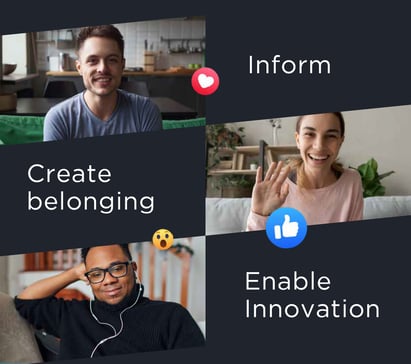
Here's how Workplace transforms your digital culture to create a richer and more meaningful digital employee experience:
📚 Informative Communications: While prioritizing personalized employee experiences, Workplace plays a crucial role. It helps employees understand the company's mission and goals (the why), thereby increasing their buy-in and engagement in their roles (the how). This aligns well with the ongoing efforts to provide continuous learning and development opportunities, ensuring everyone is informed and aligned.
💓 Shows Empathy: When fostering a user-friendly digital environment, Workplace supports by enabling internal communications to resonate on a human level. It assists in developing an empathetic tone, showcasing care and fostering stronger bonds among employees, thus enhancing the overall employee satisfaction.
🌎 Promotes Sense of Belonging: As part of promoting a healthy work-life balance, Workplace provides a platform for every employee to have a voice. It promotes inclusivity and diversity, building a sense of community and belonging that's integral to the digital employee experience, no matter where they're working from.
💡 Fosters Innovation: As we stress the importance of investing in seamless digital tools, Workplace stands out by encouraging a culture of innovation. It provides a collaborative platform where ideas can be freely shared, fostering creativity and innovation. By providing the right technology, it helps close the gap between idea generation and execution, bolstering productivity and efficiency.
By leveraging Workplace's capabilities, businesses can effectively navigate the challenges of digital transformation, resulting in a more engaging and empowering digital workspace for their teams
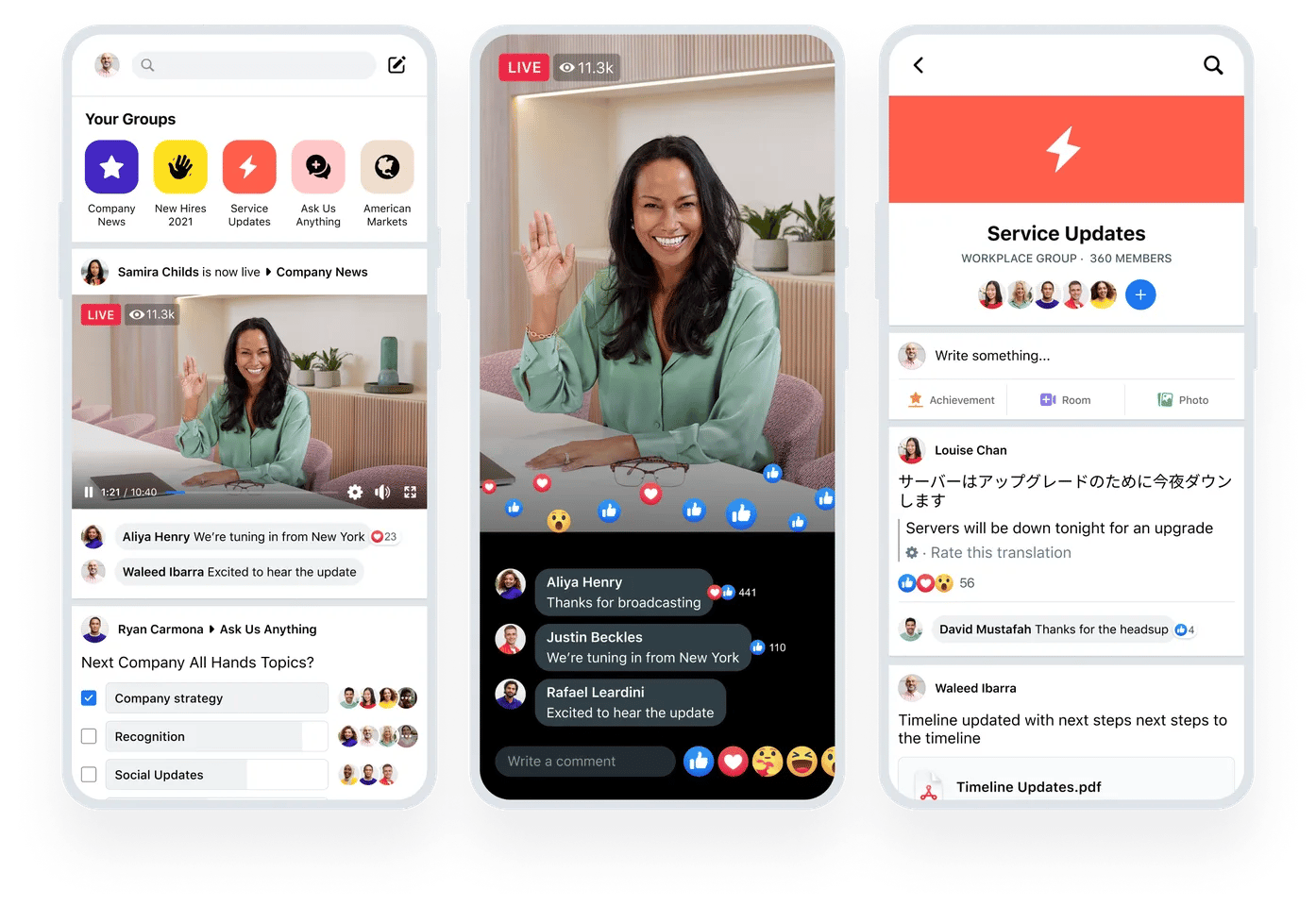
Conclusion:
Digital transformation is no longer about adopting the most sophisticated technology; it's about creating a user-friendly, engaging, and empowering employee experience. As businesses continue to strive for increased productivity and efficiency, the spotlight should be on the employees who are at the forefront of these transformations. By placing people at the core of digital strategy and leveraging collaborative digital platforms, businesses can foster a robust digital culture, drive meaningful employee engagement, and ultimately, lead a successful digital transformation.
Digital Transformation for Enhanced Employee Experience: The Case of Delek US
The case of Delek US stands as a testament to the transformative power of digital tools in bridging communication gaps and fostering a connected workforce. As a diversified energy company with over 4,000 employees scattered across multiple locations, Delek grappled with the challenge of compartmentalized communication. Their journey to form a cohesive "One Delek" community led them to Workplace from Meta, a platform that offered seamless connectivity and an avenue for all employees to share ideas, irrespective of their geographical locations. With Workplace from Meta, Delek achieved remarkable results.
Struggling with compartmentalized communication across your dispersed workforce? Desiring a digital solution to bring everyone together and foster a sense of community?
At LineZero, we assist businesses in leveraging digital platforms to improve connectivity, collaboration, and overall employee experience.
If this resonates with your current challenge, it's time for us to connect.
Start your journey towards a more unified and engaged workplace today!
Tags:
Employee ExperienceJune 26, 2023




.png?width=520&height=294&name=LINEZERO%20BLOG%20COVERS%20(2).png)
Comments